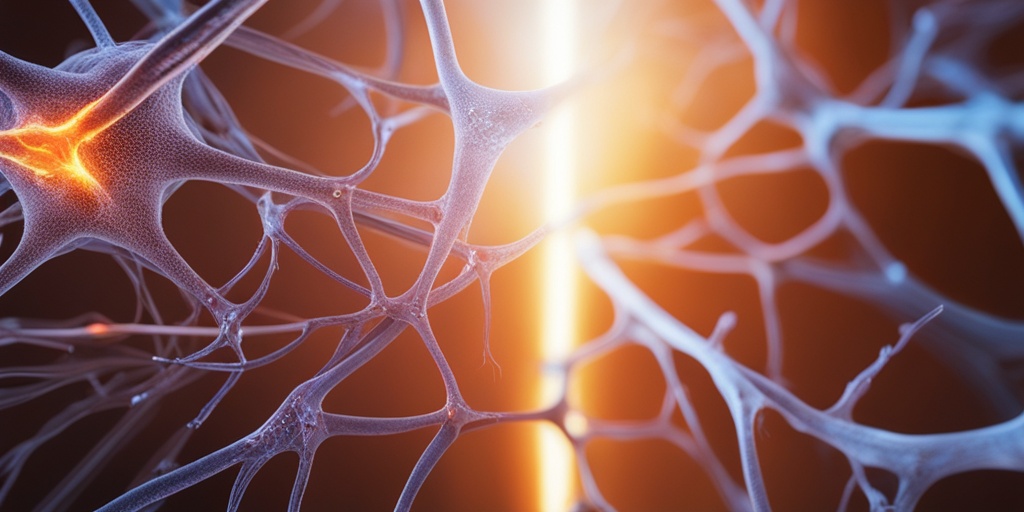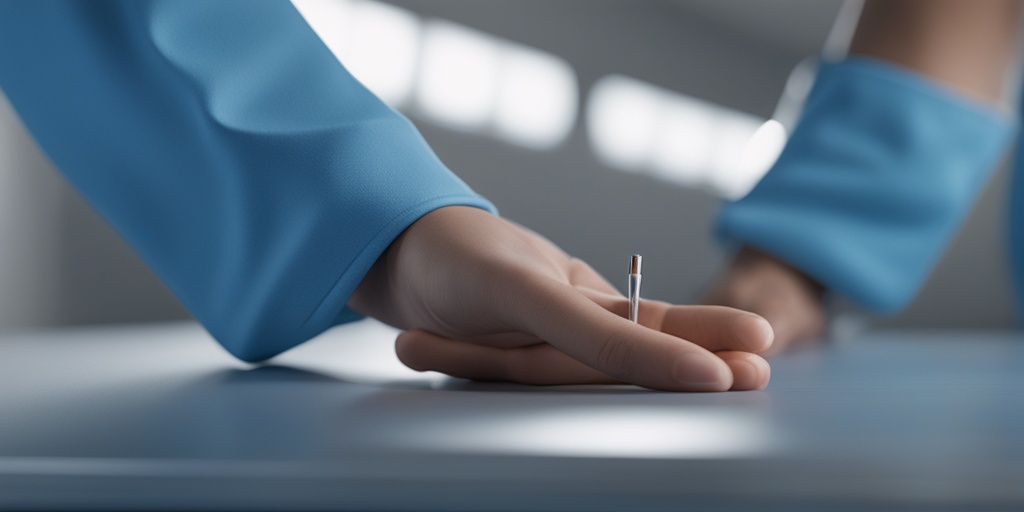What Is Reflex Neurovascular Dystrophy?
Have you ever heard of Reflex Neurovascular Dystrophy (RND)? If not, don’t worry – it’s a relatively rare condition that affects the nervous system. But if you’re reading this, chances are you or someone you know might be experiencing its symptoms. So, let’s dive in and explore what RND is all about! 🤔
Defining Reflex Neurovascular Dystrophy
Reflex Neurovascular Dystrophy is a chronic condition characterized by abnormal communication between the nervous system and blood vessels. This leads to a range of symptoms, including pain, swelling, and changes in skin temperature and color. The condition typically affects one limb, but in some cases, it can spread to other areas of the body.
Causes and Triggers
The exact causes of RND are still not fully understood, but research suggests that it may be triggered by:
- Injury or trauma to the affected limb
- Infections, such as Legionnaires’ disease
- Surgery or medical procedures
- Emotional stress or anxiety
It’s essential to note that RND is often misdiagnosed or underdiagnosed, which can lead to delayed treatment and worsening symptoms. If you’re experiencing persistent pain or discomfort, it’s crucial to consult with a healthcare professional for an accurate diagnosis.
Understanding Reflex Sympathetic Dystrophy
Now that we’ve covered the basics of Reflex Neurovascular Dystrophy, let’s explore its connection to Reflex Sympathetic Dystrophy (RSD). 🤝
The Connection Between RND and RSD
Reflex Sympathetic Dystrophy is a condition that shares many similarities with RND. In fact, some medical professionals consider RSD to be a more severe form of RND. Both conditions involve abnormal sympathetic nerve activity, leading to pain, inflammation, and changes in skin temperature and color.
The main difference between the two conditions lies in their severity and impact on daily life. RSD is often more debilitating, causing intense pain, limited mobility, and emotional distress. RND, on the other hand, may have milder symptoms, but still significantly affects quality of life.
If you’re struggling to understand the complexities of RND and RSD, consider consulting with a healthcare professional or exploring reputable online resources like Yesil Health AI, which provides evidence-based health answers and guidance.
In conclusion, Reflex Neurovascular Dystrophy is a complex condition that requires a comprehensive understanding of its causes, symptoms, and treatment options. By recognizing the connection between RND and RSD, we can better support individuals affected by these conditions and work towards improving their overall well-being. 💕

Reflex Neurovascular Dystrophy Symptoms
Reflex Neurovascular Dystrophy (RND) is a complex and chronic condition that affects the nervous system, causing a range of symptoms that can be debilitating and impact daily life. While RND can manifest differently in each individual, there are some common symptoms that people with RND often experience.
Pain and Sensitivity
One of the most common symptoms of RND is chronic pain, which can be severe and debilitating. This pain can be localized to a specific area, such as the hands or feet, or it can be more widespread, affecting multiple areas of the body. People with RND may also experience allodynia, which is a heightened sensitivity to touch or other stimuli that would not normally cause pain.
Swelling and Inflammation
RND can cause swelling and inflammation in the affected areas, which can lead to stiffness, redness, and warmth. This swelling can be painful and can make it difficult to move the affected joints.
Temperature Changes
Some people with RND may experience temperature changes in their skin, such as coldness or warmth, which can be uncomfortable and even painful.
Motor Function Impairment
RND can also cause motor function impairment, which can affect a person’s ability to move their limbs or perform daily activities. This can include weakness, tremors, or spasms in the affected muscles.
Emotional and Psychological Symptoms
RND can also have a significant impact on a person’s emotional and psychological well-being. The chronic pain and discomfort can lead to anxiety, depression, and feelings of frustration and hopelessness.
Causes and Risk Factors of Reflex Neurovascular Dystrophy
While the exact causes of Reflex Neurovascular Dystrophy are not fully understood, there are several factors that can contribute to its development.
Genetic Predisposition
Research suggests that RND may have a genetic component, with some people being more prone to developing the condition due to their genetic makeup.
Trauma and Injury
Trauma or injury to the affected area can trigger the development of RND. This can include injuries such as fractures, sprains, or strains, as well as surgical trauma.
Infection and Inflammation
Infection and inflammation can also contribute to the development of RND. This can include infections such as Lyme disease or other bacterial or viral infections.
Stress and Anxiety
Stress and anxiety can exacerbate RND symptoms and may even trigger the development of the condition in some people.
It’s essential to work with a healthcare professional to determine the underlying causes of RND and develop an effective treatment plan to manage symptoms and improve quality of life. 💊

Diagnosing Reflex Neurovascular Dystrophy
Reflex Neurovascular Dystrophy (RND) is a complex and often misdiagnosed condition that affects the nervous system and blood vessels. Diagnosing RND can be a challenging process, and it’s essential to work with a healthcare professional who has experience in recognizing the symptoms and characteristics of this condition.
What to Expect During the Diagnostic Process
The diagnostic process for RND typically involves a combination of physical examinations, medical history reviews, and diagnostic tests. Your healthcare provider will likely start by asking you questions about your symptoms, medical history, and lifestyle. They may also perform a physical examination to check for signs of nerve damage, muscle weakness, and other abnormalities.
In some cases, your healthcare provider may order diagnostic tests to rule out other conditions that may be causing your symptoms. These tests may include:
- Electromyography (EMG) to measure the electrical activity of your muscles
- Nerve conduction studies to assess the speed and strength of nerve signals
- Imaging tests, such as X-rays, CT scans, or MRI scans, to rule out other conditions that may be causing your symptoms
- Blood tests to check for underlying medical conditions that may be contributing to your symptoms
Criteria for Diagnosing RND
There is no single test that can definitively diagnose RND. Instead, healthcare providers use a combination of clinical criteria to make a diagnosis. These criteria may include:
- Persistent pain or discomfort in the affected limb
- Sensitivity to touch or temperature changes
- Swelling or changes in skin temperature
- Abnormal sweating or skin color changes
- Weakened or paralyzed muscles
- Abnormal reflexes or nerve function
It’s essential to work with a healthcare provider who has experience in diagnosing and treating RND. They can help you develop a personalized treatment plan that addresses your unique needs and symptoms.
Treatment Options for Reflex Neurovascular Dystrophy
Treating Reflex Neurovascular Dystrophy (RND) typically involves a multidisciplinary approach that combines physical therapy, pain management, and lifestyle changes. The goal of treatment is to manage symptoms, improve function, and enhance overall quality of life.
Pain Management
Pain management is a critical component of RND treatment. Your healthcare provider may recommend a combination of medications, including:
- Pain relievers, such as acetaminophen or NSAIDs
- Anticonvulsants, such as gabapentin or pregabalin, to manage nerve pain
- Antidepressants, such as amitriptyline or duloxetine, to manage chronic pain
- Opioids, in some cases, to manage severe pain
In addition to medications, your healthcare provider may recommend alternative pain management techniques, such as:
- Acupuncture or acupressure to stimulate nerve endings and reduce pain
- Physical therapy to improve range of motion and reduce stiffness
- Relaxation techniques, such as meditation or deep breathing, to manage stress and anxiety
Physical Therapy and Rehabilitation
Physical therapy and rehabilitation play a crucial role in RND treatment. A physical therapist can help you:
- Improve range of motion and reduce stiffness
- Strengthen weakened muscles
- Improve balance and coordination
- Develop strategies to manage daily activities and reduce pain
It’s essential to work with a physical therapist who has experience in treating RND. They can help you develop a personalized exercise program that addresses your unique needs and symptoms.
Remember, treating RND requires a comprehensive approach that addresses physical, emotional, and lifestyle factors. By working with a healthcare team and making lifestyle changes, you can manage your symptoms and improve your overall quality of life. 💪

Managing Reflex Neurovascular Dystrophy Pain
Living with Reflex Neurovascular Dystrophy (RND) can be a daily struggle, especially when it comes to managing the chronic pain that comes with it. RND is a complex condition that affects the nervous system, causing pain, inflammation, and discomfort in various parts of the body. In this article, we’ll explore the different ways to manage RND pain and improve your overall quality of life.
Understanding RND Pain
Before we dive into managing RND pain, it’s essential to understand the underlying causes of this chronic condition. RND is a type of Complex Regional Pain Syndrome (CRPS) that affects the nerves, blood vessels, and skin. The exact cause of RND is still unknown, but it’s believed to be triggered by trauma, injury, or surgery.
RND pain can manifest in different ways, including:
- Burning or aching pain in the affected limb
- Sensitivity to touch or temperature changes
- Swelling, redness, or warmth in the affected area
- Weakness or numbness in the affected limb
Pharmacological Interventions
While there is no cure for RND, various medications can help alleviate the pain and discomfort associated with this condition. Your doctor may prescribe:
- Pain relievers, such as acetaminophen or NSAIDs, to reduce pain and inflammation
- Anticonvulsants, like gabapentin or pregabalin, to manage nerve pain
- Antidepressants, such as amitriptyline or duloxetine, to address depression and anxiety
- Topical creams or patches, containing lidocaine or capsaicin, to numb the affected area
Non-Pharmacological Interventions
In addition to medications, there are several non-pharmacological interventions that can help manage RND pain. These include:
- Physical therapy: Gentle exercises and stretches can help improve range of motion, reduce stiffness, and strengthen the affected limb
- Occupational therapy: Adaptive techniques and tools can help you perform daily activities with ease and reduce pain
- Alternative therapies: Acupuncture, massage, and yoga can help reduce stress, anxiety, and pain
- Cognitive-behavioral therapy: This type of therapy can help you cope with chronic pain, depression, and anxiety
Lifestyle Changes
Making lifestyle changes can also help alleviate RND pain. Consider:
- Rest and relaxation: Getting enough sleep and engaging in relaxing activities, such as meditation or deep breathing, can help reduce pain and stress
- Exercise and physical activity: Gentle exercises, like swimming or cycling, can help improve mood and reduce pain
- Dietary changes: Eating a balanced diet rich in omega-3 fatty acids, vitamin D, and antioxidants can help reduce inflammation and pain
- Stress management: Learning stress-reducing techniques, such as mindfulness or journaling, can help cope with chronic pain
—
Reflex Neurovascular Dystrophy Prognosis and Outlook
Receiving a diagnosis of Reflex Neurovascular Dystrophy (RND) can be overwhelming, leaving you wondering about the prognosis and outlook for this complex condition. While RND is a chronic condition, the good news is that with proper management and treatment, it’s possible to improve your quality of life and reduce symptoms.
What to Expect
The prognosis for RND varies from person to person, depending on the severity of symptoms, response to treatment, and individual factors. In general, people with RND can experience:
- Chronic pain, which can be managed with medications and lifestyle changes
- Intermittent flares, which can be triggered by stress, changes in weather, or other factors
- Gradual improvement in symptoms over time, especially with early intervention and treatment
Factors Affecting Prognosis
Several factors can influence the prognosis and outlook for RND, including:
- Early diagnosis and treatment: Early intervention can improve outcomes and reduce the risk of complications
- Severity of symptoms: More severe symptoms can impact daily life and reduce quality of life
- Response to treatment: People who respond well to treatment tend to have a better prognosis
- Lifestyle factors: Maintaining a healthy lifestyle, including regular exercise, a balanced diet, and stress management, can improve outcomes
Coping with RND
Living with RND requires a multifaceted approach that includes medical treatment, lifestyle changes, and emotional support. It’s essential to:
- Stay informed: Educate yourself about RND, its symptoms, and treatment options
- Build a support network: Surround yourself with family, friends, and healthcare professionals who understand your condition
- Focus on self-care: Prioritize your physical and emotional well-being by engaging in activities that bring you joy and relaxation
Remember, while RND is a chronic condition, it’s not a definition of your identity. With the right treatment, support, and mindset, you can manage your symptoms and improve your quality of life. 💪

Frequently Asked Questions about Reflex Neurovascular Dystrophy
What is Reflex Neurovascular Dystrophy?
Reflex Neurovascular Dystrophy (RND) is a rare and complex condition that affects the nervous system, blood vessels, and skin. It is characterized by abnormal nerve responses, leading to pain, inflammation, and skin changes.
What are the symptoms of Reflex Neurovascular Dystrophy?
The symptoms of RND can vary from person to person, but common symptoms include:
- Persistent pain or discomfort
- Inflammation and swelling
- Changes in skin temperature or color
- Sensitivity to touch or temperature
- Fatigue or weakness
What causes Reflex Neurovascular Dystrophy?
The exact cause of RND is still unknown, but it is believed to be related to abnormalities in the nervous system, particularly in the sympathetic nervous system. Stress, trauma, and genetics may also play a role in the development of RND.
How is Reflex Neurovascular Dystrophy diagnosed?
RND can be challenging to diagnose, as its symptoms can be similar to those of other conditions. A diagnosis is typically made through a combination of:
- Medical history and physical examination
- Imaging tests, such as X-rays or MRIs
- Nerve conduction studies or electromyography
- Blood tests to rule out other conditions
How is Reflex Neurovascular Dystrophy treated?
Treatment for RND typically involves a multidisciplinary approach, including:
- Pain management with medication or alternative therapies
- Physical therapy to improve mobility and strength
- Occupational therapy to adapt to daily activities
- Cognitive-behavioral therapy to manage stress and anxiety
Is Reflex Neurovascular Dystrophy a chronic condition?
Yes, RND is a chronic condition, meaning it can persist for an extended period. However, with proper treatment and management, it is possible to alleviate symptoms and improve quality of life.
Can Reflex Neurovascular Dystrophy be prevented?
Since the exact cause of RND is still unknown, it is difficult to prevent the condition. However, managing stress, maintaining a healthy lifestyle, and seeking medical attention if symptoms persist can help reduce the risk of developing RND.
Where can I find more information about Reflex Neurovascular Dystrophy?
There are several resources available to learn more about RND, including:
- National Institute of Neurological Disorders and Stroke (NINDS)
- Reflex Neurovascular Dystrophy Association (RNDA)
- Online support groups and forums
🤝 Remember, it’s essential to consult with a healthcare professional for personalized information and guidance on managing Reflex Neurovascular Dystrophy.




